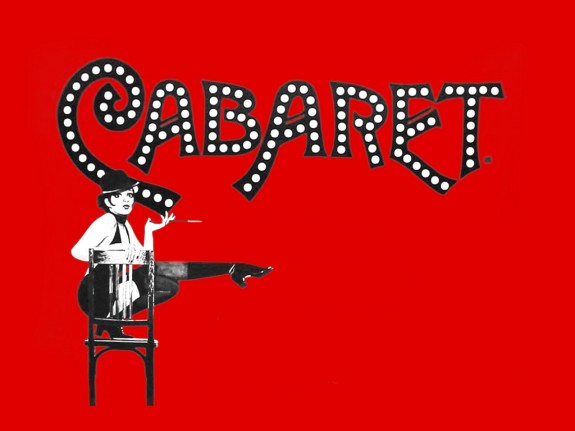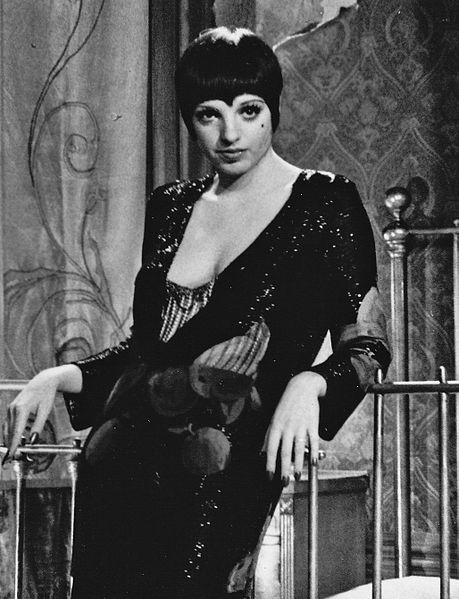Oscar Redux: Life is a Cabaret; An Old Friend is Back
For the 40th anniversary of the Oscars that made Cabaret a classic, actor Joel Grey stops by the Smithsonian for a special donation and screening
![]()

Liza Minnelli took home Best Actress for her role as Sally Bowles in Cabaret. Image courtesy of Fanpop
Sometimes, the road to the Red Carpet is as fascinating as the journey to Oz—and with a more glittering prize behind the curtain. That’s certainly true of the 1972 film Cabaret, which won a colossal eight Oscars, including Best Director (Bob Fosse), Best Actress (Liza Minnelli), and Best Supporting Actor (Joel Grey). The only big award it missed was Best Picture, which went to The Godfather.
Cabaret began its life as a Broadway show produced and directed by Hal Prince in 1966, but that stage musical was itself based on Christopher Isherwood’s 1939 novel, Goodbye to Berlin; a 1951 play, I Am a Camera, was also taken from this short novel. In part a fictionalized memoir, Goodbye to Berlin chronicled Isherwood’s bohemian experiences in 1930s Berlin as Weimar fell to the rise of Fascism; the “divinely decadent” Sally Bowles debuts here as a young Englishwoman (Jill Haworth), who sings in a local cabaret.

Film poster, courtesy of the National Portrait Gallery
The play I Am a Camera fizzled, although it remains chiseled in Broadway history for New York critic Walter Kerr’s infamous review: “Me no Leica.” The key stage production came about in 1966 when Hal Prince collaborated with composer John Kander and lyricist Fred Ebb on the landmark Broadway musical, Cabaret.
Prince wanted to develop his idea of the “concept musical” with this show—he told his cast at the first rehearsal, a show was not only a spectacle that “promotes entertainment,” but should have a theme that “makes an important statement.” The devastating rise of Fascism would be an inescapable dramatic presence: designer Boris Aronson created a huge mirror that faced the audience and, in its reflection, incorporated these passive spectators into the horrific events unfolding onstage.
One key character introduced by Prince was the Master of Ceremonies. In the mid-1990s, curator Dwight Blocker Bowers of the American History Museum and I interviewed Hal Prince for an exhibition that we were working on, “Red, Hot, & Blue: A Smithsonian Salute to the American Musical.” Prince told us that this role was based on a dwarf emcee he had seen at a club in West Germany when he served in the U.S. Army after World War II. In Cabaret, the Emcee—portrayed with charming decadence by Joel Grey—symbolizes the precarious lives of people caught in the web of Nazism’s rise to power. The Emcee rules over a cast of characters at a dicey cabaret called the Kit Kat Klub, and his behavior becomes the crux of the show: uncontrolled and without any moral restraint, he represents the flip side of “freedom.”
Hal Prince’s desire to produce a break-through musical reflected his commitment to devising a socially responsible musical theater. Just as his stage production grew out of the social and political upheavals of the Sixties, the show’s identity as a postwar cautionary tale continued when the film Cabaret premiered in 1972, as reports of a Watergate burglary began appearing in the Washington Post.
Today, the film version of Cabaret is celebrating its 40th anniversary with the release of a fully-restored DVD. In the movie, Joel Grey reprized his Emcee role, and the film begins with him drawing you leeringly into his kaleidoscopic refuge at the Kit Kat Club–a subterranean haven where demi-monde figures cast shadows of in consequence while Nazi boots stomp nearby. (Later in the film, it’s clear that the song “Tomorrow Belongs to Me” doesn’t refer to them.)

Minnelli stole the show. Liza May Minnelli; 1972 by Alan Pappe. Courtesy of the National Portrait Gallery; gift of Time magazine
In the film version, the role of Sally Bowles is played by Liza Minnelli, whose strengths as a singer and dancer are reflected in her Oscar-winning portrayal; in the film, Sally Bowles has become an American and is a good deal more talented than any actual Kit Kat Klub entertainer would ever have been. In addition to her show-stopping performance of the title song, Minnelli-Bowles sings such evocative Kander and Ebb works as “Maybe This Time” and, in a duet with Joel Grey, “The Money Song.” She also dazzles in the churning choreography Bob Fosse devised for her.
The Library of Congress selected Cabaret for preservation in the National Film Registry in 1995, deeming it “culturally, historically, or aesthetically significant.” The newly-restored DVD was made possible after 1,000 feet of damaged film was repaired through the process of hand-painting with a computer stylus.
This restoration is being spotlighted at the National Museum of American History’s Warner Theatre over the Oscar weekend. With his donated Emcee costume displayed onstage, Joel Grey will be interviewed by entertainment curator Dwight Bowers on February 22. As the lights go down and the film begins, the theater will be filled with Grey’s legendary Emcee bidding everyone, “Willkommen! Bienvenue! Welcome!/ Im Cabaret, Au Cabaret, To Cabaret!”

Curator Amy Henderson of the National Portrait Gallery.
A regular contributor to Around the Mall, Amy Henderson covers the best of pop culture from her view at the National Portrait Gallery. She recently wrote about Bangs and other bouffant hairstyles and Downton Abbey.
/https://tf-cmsv2-smithsonianmag-media.s3.amazonaws.com/accounts/headshot/Amy_Henderson_NPG1401.jpg)

/https://tf-cmsv2-smithsonianmag-media.s3.amazonaws.com/accounts/headshot/Amy_Henderson_NPG1401.jpg)